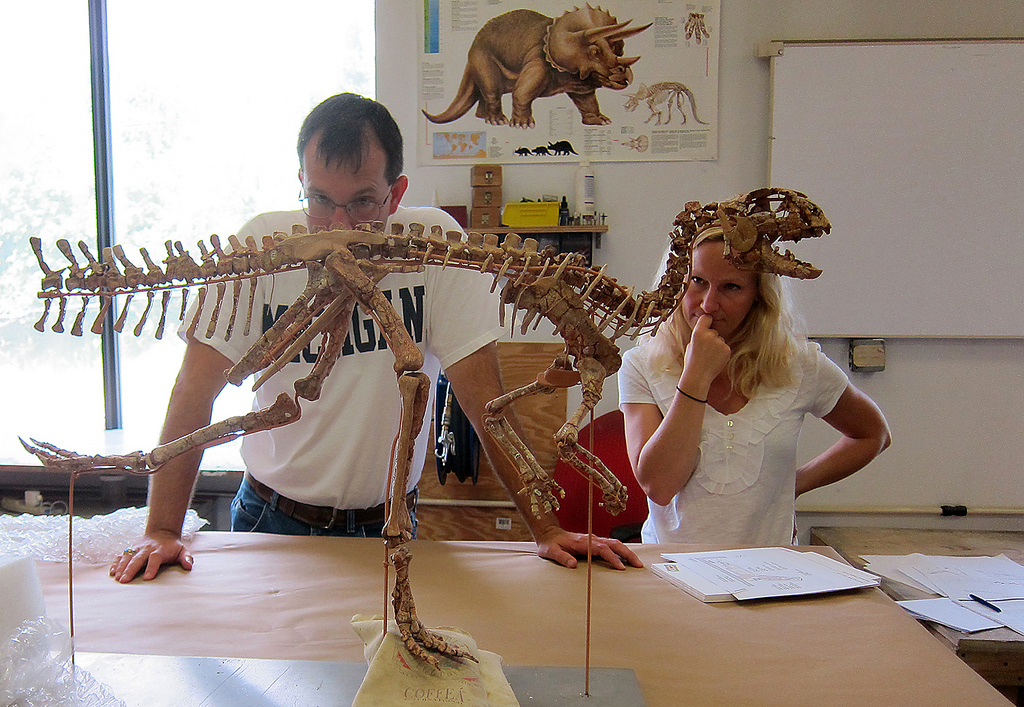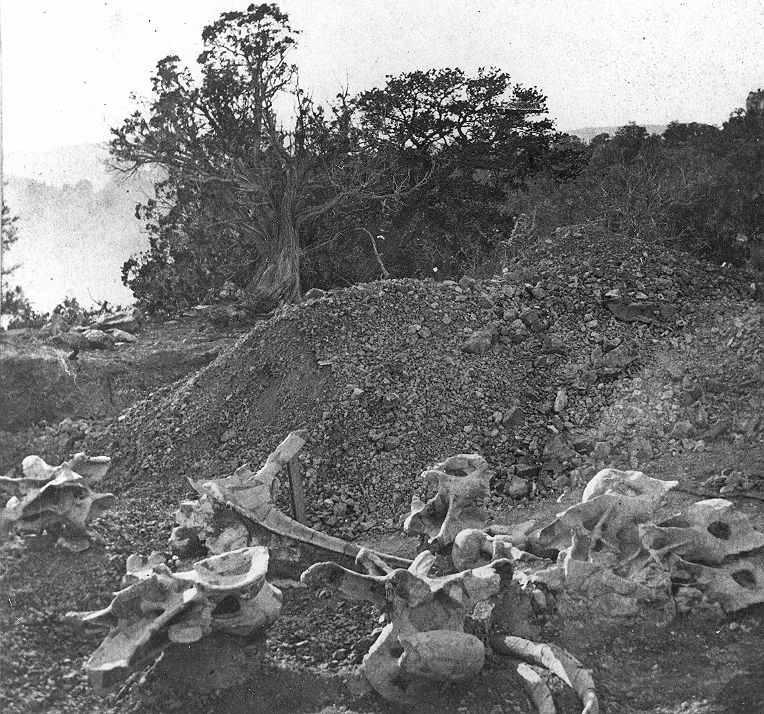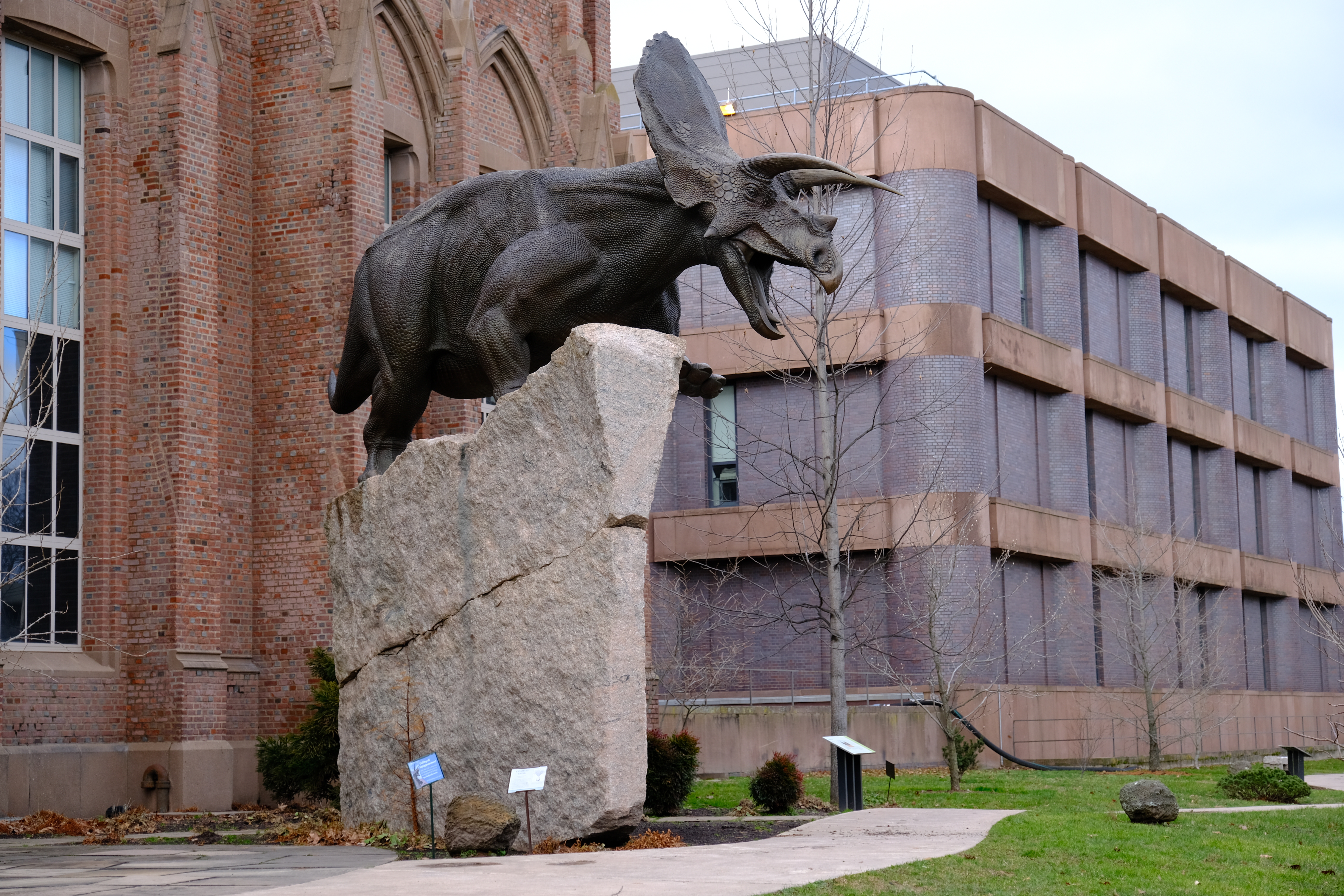|
Othnielosaurus
''Nanosaurus'' ("small or dwarf lizard") is an extinct genus of neornithischian dinosaur that lived about 155 to 148 million years ago, during the Late Jurassic in North America. Its fossils are known from the Morrison Formation of the south-western United States. The type and only species, ''Nanosaurus agilis'', was described and named by Othniel Charles Marsh in 1877. The taxon has a complicated taxonomic history, largely the work of Marsh and Peter M. Galton, involving the genera '' Laosaurus'', ''Hallopus'', ''Drinker'', ''Othnielia'', and ''Othnielosaurus'', the latter three now being considered to be synonyms of ''Nanosaurus''. It had historically been classified as a hypsilophodont or fabrosaur, types of generalized small bipedal herbivore, but more recent research has abandoned these groupings as paraphyletic and ''Nanosaurus'' is today considered a basal member of Neornithischia. History and taxonomy Marsh's original groundwork ''Nanosaurus'' has had a long and c ... [...More Info...] [...Related Items...] OR: [Wikipedia] [Google] [Baidu] |
Laosaurus
''Laosaurus'' (meaning "stone or fossil lizard") is a genus of neornithischian dinosaur. The type species, ''Laosaurus celer'', was first described by O.C. Marsh in 1878 from remains from the Oxfordian-Tithonian-age Upper Jurassic Morrison Formation of Wyoming. The validity of this genus is doubtful because it is based on fragmentary fossils. A second species from the Morrison Formation, ''L. gracilis'', and a species from the late Cretaceous Allison Formation of Alberta, Canada, ''Laosaurus minimus'', are also considered dubious. History and taxonomy Marsh (1878a) named his new genus from vertebrae ( YPM 1874) found by Samuel Wendell Williston at Como Bluff, Wyoming, from rocks of the Morrison Formation. The type material includes nine partial and two complete tail vertebral centra, which he concluded came from a " fox-sized" animal. In the same year, he named two other species: ''L. gracilis'', originally based on a back vertebral centrum, a tail vertebral centrum, a ... [...More Info...] [...Related Items...] OR: [Wikipedia] [Google] [Baidu] |
Hypsilophodont
Hypsilophodontidae (or Hypsilophodontia) is a traditionally used family of ornithopod dinosaurs, generally considered invalid today. It historically included many small bodied bipedal neornithischian taxa from around the world, and spanning from the Middle Jurassic until the Late Cretaceous. This inclusive status was supported by some phylogenetic analyses from the 1990s and mid 2000s, although there have also been many finding that the family is an unnatural grouping which should only include the type genus, ''Hypsilophodon'', with the other genera being within clades like Thescelosauridae and Elasmaria. A 2014 analysis by Norman recovered a grouping of ''Hypsilophodon'', Rhabdodontidae and ''Tenontosaurus'', which he referred to as Hypsilophodontia. That clade is formally defined in the ''PhyloCode'' as "the smallest clade within Ornithopoda containing ''Hypsilophodon foxii'' and '' Tenontosaurus tilletti'' provided it does not include '' Iguanodon bernissartensis''". All other ... [...More Info...] [...Related Items...] OR: [Wikipedia] [Google] [Baidu] |
Othniel Charles Marsh
Othniel Charles Marsh (October 29, 1831 – March 18, 1899) was an American professor of paleontology. A prolific fossil collector, Marsh was one of the preeminent paleontologists of the nineteenth century. Among his legacies are the discovery or description of dozens of new species—including the stegosaurus and triceratops—and theories on the origins of birds. He spent his academic career at Yale College and was president of the National Academy of Sciences. Born into a modest family, Marsh was able to afford higher education thanks to the generosity of his wealthy uncle George Peabody. After graduating from Yale College in 1860 he traveled the world, studying anatomy, mineralogy and geology. He obtained a teaching position at Yale upon his return. From the 1870s to 1890s, he competed with rival paleontologist Edward Drinker Cope in a period of frenzied Western American expeditions known as the Bone Wars. Marsh's greatest legacy is the collection of Mesozoic reptiles, Creta ... [...More Info...] [...Related Items...] OR: [Wikipedia] [Google] [Baidu] |
Garden Park, Colorado
Garden Park is a paleontological site in Fremont County, Colorado, known for its Jurassic dinosaurs and the role the specimens played in the infamous Bone Wars of the late 19th century. Located north of Cañon City, the name originates from the area providing vegetables to the miners at nearby Cripple Creek in the 19th century. Garden Park proper is a triangular valley surrounded by cliffs on the southeast and southwest and by mountains to the north; however, the name is also refers to the dinosaur sites on top and along the cliffs. The dinosaur sites now form thGarden Park Paleontological Resource Area which is overseen by the Bureau of Land Management. Geology Garden Park was formed by erosion of sedimentary rocks that have been distorted by uplift of the Rocky Mountains. The region is bisected by Four Mile Creek (also called Oil Creek), which has carved a canyon through the Mesozoic and Paleozoic sedimentary rocks. One of these Mesozoic strata is the Morrison Formation, ... [...More Info...] [...Related Items...] OR: [Wikipedia] [Google] [Baidu] |
Late Jurassic
The Late Jurassic is the third Epoch (geology), epoch of the Jurassic Period, and it spans the geologic time scale, geologic time from 161.5 ± 1.0 to 143.1 ± 0.8 million years ago (Ma), which is preserved in Upper Jurassic stratum, strata.Owen 1987. In European lithostratigraphy, the name "Malm" indicates rocks of Late Jurassic age. In the past, ''Malm'' was also used to indicate the unit of geological time, but this usage is now discouraged to make a clear distinction between lithostratigraphic and geochronologic/chronostratigraphic units. Subdivisions The Late Jurassic is divided into three ages, which correspond with the three (faunal) stages of Upper Jurassic rock: Paleogeography During the Late Jurassic Epoch, Pangaea broke up into two supercontinents, Laurasia to the north, and Gondwana to the south. The result of this break-up was the emergence of the Atlantic Ocean, which initially was relatively narrow. Life forms This epoch is well known for many famous types of d ... [...More Info...] [...Related Items...] OR: [Wikipedia] [Google] [Baidu] |
Colorado
Colorado is a U.S. state, state in the Western United States. It is one of the Mountain states, sharing the Four Corners region with Arizona, New Mexico, and Utah. It is also bordered by Wyoming to the north, Nebraska to the northeast, Kansas to the east, and Oklahoma to the southeast. Colorado is noted for its landscape of mountains, forests, High Plains (United States), high plains, mesas, canyons, plateaus, rivers, and desert lands. It encompasses most of the Southern Rocky Mountains, as well as the northeastern portion of the Colorado Plateau and the western edge of the Great Plains. Colorado is the List of U.S. states and territories by area, eighth-largest U.S. state by area and the List of U.S. states and territories by population, 21st by population. The United States Census Bureau estimated the population of Colorado to be 5,957,493 as of July 1, 2024, a 3.2% increase from the 2020 United States census. The region has been inhabited by Native Americans in the United St ... [...More Info...] [...Related Items...] OR: [Wikipedia] [Google] [Baidu] |
Paraphyletic
Paraphyly is a taxonomic term describing a grouping that consists of the grouping's last common ancestor and some but not all of its descendant lineages. The grouping is said to be paraphyletic ''with respect to'' the excluded subgroups. In contrast, a monophyletic grouping (a clade) includes a common ancestor and ''all'' of its descendants. The terms are commonly used in phylogenetics (a subfield of biology) and in the tree model of historical linguistics. Paraphyletic groups are identified by a combination of synapomorphies and symplesiomorphies. If many subgroups are missing from the named group, it is said to be polyparaphyletic. The term received currency during the debates of the 1960s and 1970s accompanying the rise of cladistics, having been coined by zoologist Willi Hennig to apply to well-known taxa like Reptilia (reptiles), which is paraphyletic with respect to birds. Reptilia contains the last common ancestor of reptiles and all descendants of that ancestor exc ... [...More Info...] [...Related Items...] OR: [Wikipedia] [Google] [Baidu] |
Basal (phylogenetics)
In phylogenetics, basal is the direction of the ''base'' (or root) of a phylogenetic tree#Rooted tree, rooted phylogenetic tree or cladogram. The term may be more strictly applied only to nodes adjacent to the root, or more loosely applied to nodes regarded as being close to the root. Note that extant taxa that lie on branches connecting directly to the root are not more closely related to the root than any other extant taxa. While there must always be two or more equally "basal" clades sprouting from the root of every cladogram, those clades may differ widely in taxonomic rank, Phylogenetic diversity, species diversity, or both. If ''C'' is a basal clade within ''D'' that has the lowest rank of all basal clades within ''D'', ''C'' may be described as ''the'' basal taxon of that rank within ''D''. The concept of a 'key innovation' implies some degree of correlation between evolutionary innovation and cladogenesis, diversification. However, such a correlation does not make a given ca ... [...More Info...] [...Related Items...] OR: [Wikipedia] [Google] [Baidu] |
Dentary
In jawed vertebrates, the mandible (from the Latin ''mandibula'', 'for chewing'), lower jaw, or jawbone is a bone that makes up the lowerand typically more mobilecomponent of the mouth (the upper jaw being known as the maxilla). The jawbone is the skull's only movable, posable bone, sharing joints with the cranium's temporal bones. The mandible hosts the lower teeth (their depth delineated by the alveolar process). Many muscles attach to the bone, which also hosts nerves (some connecting to the teeth) and blood vessels. Amongst other functions, the jawbone is essential for chewing food. Owing to the Neolithic advent of agriculture (), human jaws evolved to be smaller. Although it is the strongest bone of the facial skeleton, the mandible tends to deform in old age; it is also subject to fracturing. Surgery allows for the removal of jawbone fragments (or its entirety) as well as regenerative methods. Additionally, the bone is of great forensic significance. Structure ... [...More Info...] [...Related Items...] OR: [Wikipedia] [Google] [Baidu] |
Peabody Museum Of Natural History
The Peabody Museum of Natural History at Yale University (also known as the Yale Peabody Museum of Natural History or the Yale Peabody Museum) is one of the oldest, largest, and most prolific university natural history museums in the world. It was founded by the philanthropist George Peabody in 1866 at the behest of his nephew Othniel Charles Marsh, an early paleontologist. The museum is best known for the Great Hall of Dinosaurs, which includes a mounted juvenile ''Brontosaurus'' and the mural '' The Age of Reptiles''. The museum also has permanent exhibits dedicated to human and mammal evolution; wildlife dioramas; Egyptian artifacts; local birds and minerals; and Native Americans of Connecticut. In 2020, the Peabody Museum closed for its "first comprehensive renovation in 90 years." It reopened, with more than twice the exhibition space, on March 26, 2024. Description The Peabody Museum is located at 170 Whitney Avenue in New Haven, Connecticut and is staffed by nearl ... [...More Info...] [...Related Items...] OR: [Wikipedia] [Google] [Baidu] |
Postcrania
The postcranium ("behind the cranium"; plural: postcrania) or postcranial skeleton in zoology and vertebrate paleontology is the skeleton apart from the skull. The postcranium encompasses the axial skeleton, which includes the entirety of the vertebrae and ribs, and the appendicular skeleton The appendicular skeleton is the portion of the vertebrate endoskeleton consisting of the bones, cartilages and ligaments that support the paired appendages ( fins, flippers or limbs). In most terrestrial vertebrates (except snakes, legless li ..., which includes girdles and limbs. In paleontology, there may be disagreement over whether the skull and skeleton belong to the same or different animals. One example is the case of the dinosaur '' Nemegtosaurus'', which is known only from a skull that was found in the same geological formation as the related '' Opisthocoelicaudia'', which is only known from postcranial material. References Skeletal system {{Vertebrate anatomy-stub ... [...More Info...] [...Related Items...] OR: [Wikipedia] [Google] [Baidu] |








